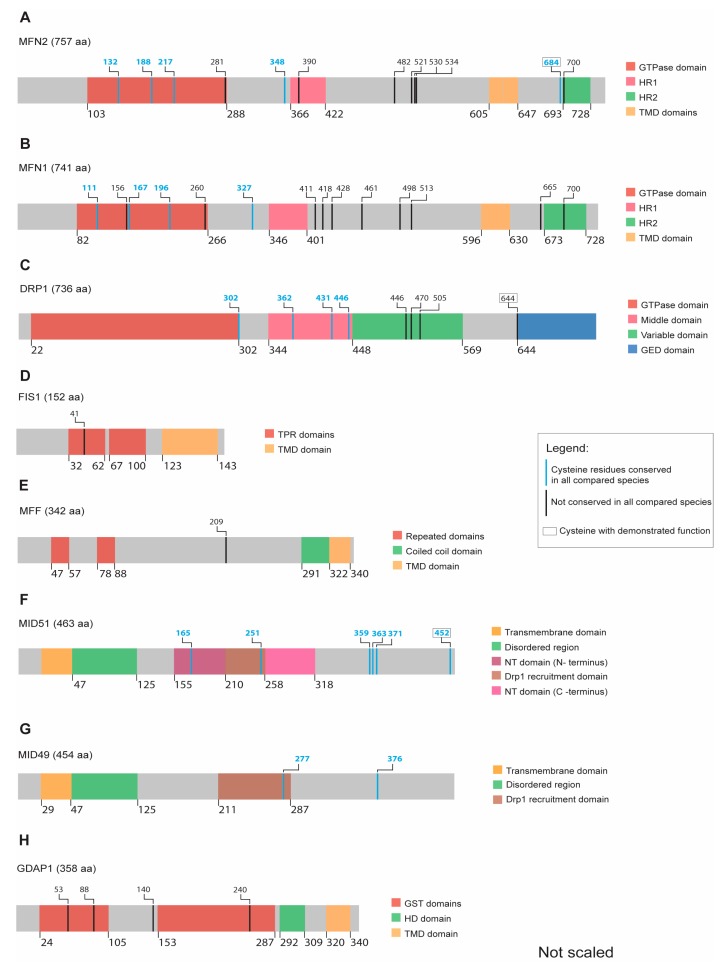Figure 3.
Scheme illustrating the relative position of conserved cysteines within recognizable protein domains of the indicated proteins. Colors are used to highlight protein domains, evolutionarily conserved cysteines, and cysteines with a demonstrated function. (A) MFN2 has five conserved cysteines out of which the C684 has a previously demonstrated redox-inducible function. (B) MFN1 contains four conserved cysteines but yet without any observed redox function. (C) DRP1 possesses four conserved cysteines, whereas a fifth not fully conserved cysteine (C644) can be redox modified. (D) FIS1 and (E) MFF do not have any conserved cysteines along their structure. (F) MID51 has six fully conserved cysteines, including C452, regulating the protein’s dimerization. (G) MID49 has two conserved cysteines (H) GDAP1 has no fully conserved cysteines.

